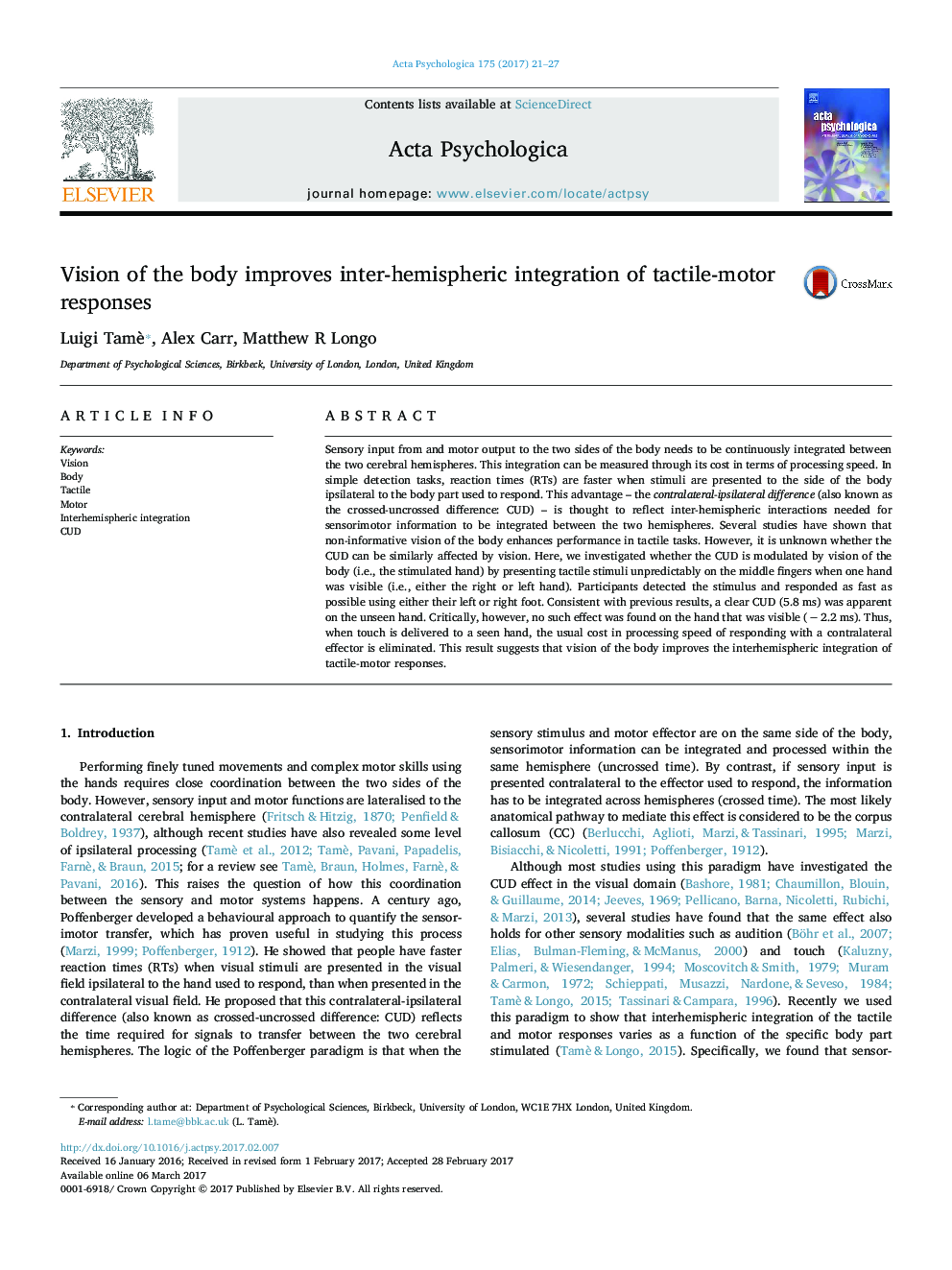| Article ID | Journal | Published Year | Pages | File Type |
|---|---|---|---|---|
| 5040307 | Acta Psychologica | 2017 | 7 Pages |
â¢The crossed-uncrossed difference (CUD) reflects sensorimotor transfer.â¢A positive CUD effect was present when vision of the hand was prevented (5.8 ms).â¢When the hand was visible, the CUD vanished (â 2.2 ms).â¢Vision of the body eliminates the cost in responding with a contralateral effector.â¢Vision improves the interhemispheric integration of tactile-motor responses.
Sensory input from and motor output to the two sides of the body needs to be continuously integrated between the two cerebral hemispheres. This integration can be measured through its cost in terms of processing speed. In simple detection tasks, reaction times (RTs) are faster when stimuli are presented to the side of the body ipsilateral to the body part used to respond. This advantage - the contralateral-ipsilateral difference (also known as the crossed-uncrossed difference: CUD) - is thought to reflect inter-hemispheric interactions needed for sensorimotor information to be integrated between the two hemispheres. Several studies have shown that non-informative vision of the body enhances performance in tactile tasks. However, it is unknown whether the CUD can be similarly affected by vision. Here, we investigated whether the CUD is modulated by vision of the body (i.e., the stimulated hand) by presenting tactile stimuli unpredictably on the middle fingers when one hand was visible (i.e., either the right or left hand). Participants detected the stimulus and responded as fast as possible using either their left or right foot. Consistent with previous results, a clear CUD (5.8 ms) was apparent on the unseen hand. Critically, however, no such effect was found on the hand that was visible (â 2.2 ms). Thus, when touch is delivered to a seen hand, the usual cost in processing speed of responding with a contralateral effector is eliminated. This result suggests that vision of the body improves the interhemispheric integration of tactile-motor responses.
